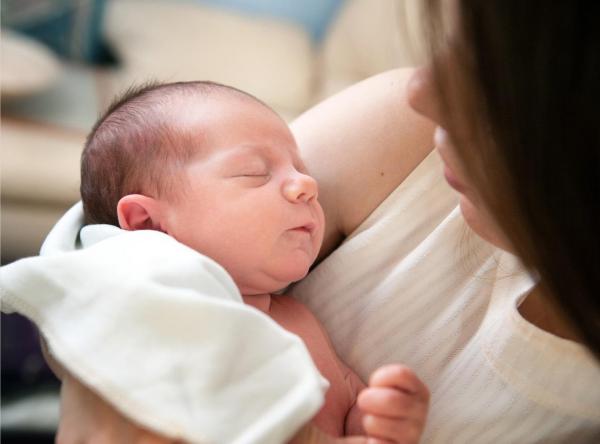At just three months old and with no warning, my older brother—my parents' first child—died in his sleep at the babysitter's house, a tragic case of a very rare condition called sudden infant death syndrome (SIDS). That was more than 30 years ago. Today my mom and dad are still together and living out their remaining years as happy grandparents. But if there's one thing that could have prevented this fortunate outcome, it was the uncertainty surrounding SIDS. How could a perfectly healthy baby die in his sleep?
Many answers to that vexing question have been proposed over the years, and it looks like we may (emphasis on “may”) be moving toward a satisfactory explanation for SIDS if this recent paper published in eBioMedicine is any indication of our progress. The study is worth discussing because it illustrates how science should be done and how helpful the media can be when they approach new data with healthy skepticism.
A possible mechanism for SIDS
The paper is freely available to read if you're so inclined, but the long and short of it is this: building on previous research, the authors hypothesized that altered activity of the enzyme Butyrylcholinesterase (BChE) could indicate which infants are more likely to succumb to SIDS. They compared levels of BChE in children who died of SIDS to two other groups, finding that levels of the enzyme were much lower in SIDS cases than in non-SIDS deaths and healthy controls.
This may prove significant because experts have long suspected that SIDS is linked to a defect in the brainstem, which helps regulate breathing and arousal from sleep. A 2006 paper published in JAMA suggested that the brainstem in at-risk children doesn't properly utilize the neurotransmitter serotonin; as a result, these infants may be unable to detect disturbances during sleep, such as low levels of oxygen, and simply “do not wake up.” The authors of the current study elaborated on this possibility in discussing the cholinergic system, of which BChE is a part:
There are two distinct arousal types defined in infants, sub-cortical activation and full cortical arousal, reflecting the hierarchical activation from the brainstem (including heart rate, blood pressure and ventilation changes) to the cortex. Any impairment of these protective responses may render an infant vulnerable to the respiratory and cardiovascular instabilities and it has been suggested that decreased cholinergic activity could impair arousal responses.
… [D]ecreased BChE may also be related to the consistent finding of decreased serotonergic activity in SIDS infants. The caudal serotonergic network in the medulla is intimately involved in ... activation of protective respiratory and cardiac autonomic reactions … leading to the suggestion that decreased serotonergic receptor binding in this area leads to failure of the autoresuscitation and arousal in sleep that ultimately causes SIDS.
If (emphasis on “if”) further research confirms these results, then BChE activity may be a measurable biomarker that could help identify at-risk infants before they die. SIDS is currently diagnosed after a death scene investigation, autopsy, and review of the child's clinical history if no other cause of death can be established. Starting with a reliable biomarker would set scientists on a course to develop effective preventative interventions for SIDS. [1]
A case of good science journalism
Given the thousands of families who have tragic stories about their experience with SIDS, the paper understandably attracted lots of media attention. But the initial coverage seriously exaggerated the results, with BioSpace even reporting that the study had pinpointed the cause of SIDS. Fortunately, this didn't go unnoticed; Newsweek, Slate, and TheVerge all published decent stories contextualizing the new research and publicly correcting BioSpace.
It's far more common for corporate media outlets to publish copycat articles that equally misreport research results. Journalists correcting each other was a nice change of pace, as was BioSpace's response to the criticism: an updated headline—“Researchers Pinpoint Important Biomarker for SIDS”—and this correction:
“BioSpace would like to clarify that despite this breakthrough, it is still abundantly important that anyone caring for a baby should follow safe sleeping practices. ie: laying them on their backs, not letting them overheat and keeping all toys and blankets out of the crib. We are in contact with [study author] Dr. Harrington and look forward to a more in-depth discussion on the potential implications of these findings.”
This is how science journalism should proceed, as a post-peer-review check on what the public is told about a study. Of course, journalists aren't nearly so useful in most circumstances. They're all too willing to pick sides in scientific disputes without examining all the data.
Nonetheless, the response to this SIDS paper helpfully illustrates that reporters are perfectly capable of objectively guiding media consumers through complex scientific discussions when they want to. We can only hope they'll start to do so consistently.
[1] The study had several important limitations. For one thing, the results were based on blood samples from just 26 cases, so it's not clear if lower BChE levels are typical in SIDS infants. See this Twitter thread by pediatrician Jonathan Marron for a good overview of the paper's limits.




